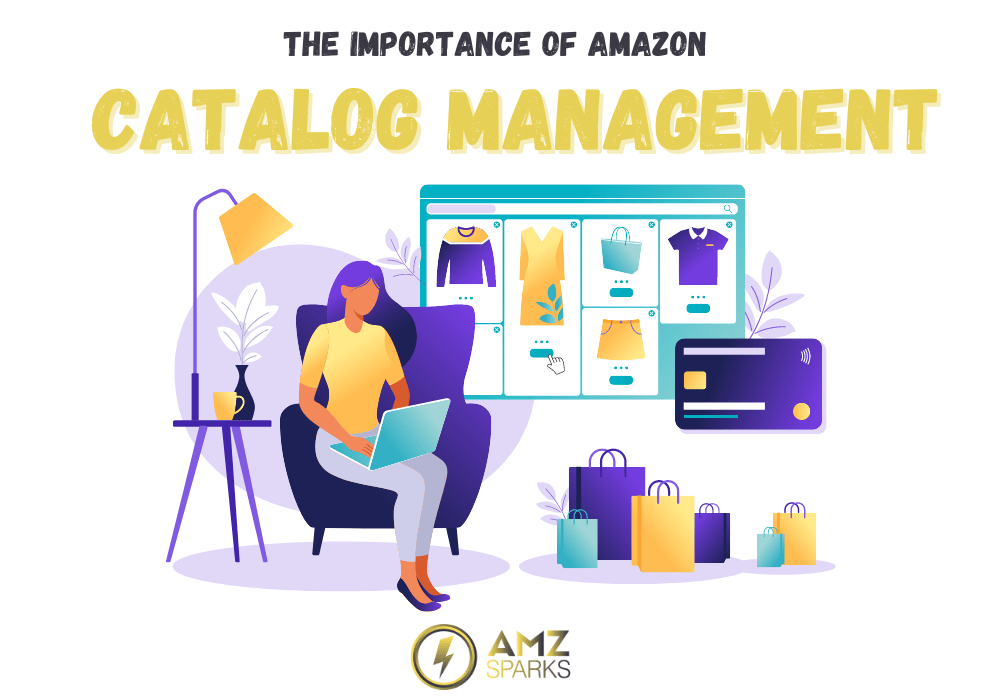Introduction
E-commerce is an ocean, teeming with countless products competing for the consumer’s attention. Standing out in this sea is no easy task. But what if there was a way to not only make your products shine but also ensure they reach the right eyes at the right time?
Table of Contents
What Exactly is Amazon Catalog Management?
It is a systematic approach to organizing, presenting, and continually updating products listed on Amazon. Think of it as the back-end work that ensures the front-end, what the customer sees, is efficient, attractive, and effective.
At its simplest, it’s about arranging products so that potential customers can find what they’re looking for easily. But, in essence, it’s much more than just organization. It encompasses categorizing products correctly, crafting compelling titles, offering high-definition images, and providing detailed product descriptions.
When optimized correctly, products become more than just items in a list; they transform into potential sales magnets, drawing in customers and leading to conversions.

Peeling Back the Layers: The Depths of Catalog Management for E-Commerce Amazon
In the evolving digital marketplace, catalog management structures your product database, making it user-friendly and navigable across platforms, not just limited to Amazon but extending to Etsy, eBay, and others.
Each of these platforms presents its unique challenges. Within these catalogs, the nuances become evident. It’s not just about listing a product but presenting it with a level of detail that anticipates and answers potential queries from shoppers.
The Significance of Catalog Management
Effective catalog management does more than make products look good. It enhances user experience, facilitates better sales, and positions products for success. Here’s why catalog management is essential:
- Visibility and Sales: An organized catalog contributes directly to better product visibility. When products are easily discoverable, they stand a better chance at sales conversions.
- Consistency: Whether you’re selling on one platform or multiple, consistency in product information, images, and pricing is vital. It builds brand credibility and trust among customers.
- Enhanced User Experience: Nothing turns off a potential buyer more than a cluttered, confusing product list. A well-structured catalog ensures that customers find what they’re looking for swiftly, leading to a positive shopping experience.
The Art and Science of Managing Your Amazon Catalog
Ensuring your Amazon catalog is optimized requires a mix of strategic planning, meticulous organization, and continuous updates. Here are some facets to consider:
- Product Variations: Amazon offers a unique system where products can be grouped based on variations, such as size or color. Understanding how to maximize this feature is crucial.
- High-Quality Listings: Beyond basic information, your product listings should offer value. This means high-resolution images, comprehensive descriptions, and perhaps even videos that showcase the product in use.
- Bulk Uploads with Amazon’s Flat File: For those with extensive product ranges, the Flat File feature on Amazon is a godsend. This tool allows for bulk product uploads, ensuring listings remain consistent and up-to-date.
- Protect Your Brand with Amazon Brand Registry: This feature is designed to protect brand identity on Amazon, offering tools that help in identifying and reporting potential copyright violations.
- Duplicates – The Silent Sales Killers: Duplicate listings can confuse customers and dilute sales. Regularly comb through your listings to ensure no duplicates exist.
Challenges in Catalog Management and Overcoming Them
Managing an extensive product catalog isn’t without its challenges:
- Platform Differentiation: Platforms like Amazon, Etsy, and eBay each have their quirks. Ensuring your catalog caters to each platform’s nuances is essential.
- Building Trust: A well-managed catalog can be the foundation of customer trust. Ensuring accurate listings, prompt updates, and quick responses to customer queries can help in fostering this trust.
- Managing Returns: Inaccurate product descriptions or misleading images can lead to higher product returns, impacting sales and brand reputation.
Troubleshooting and Evolving
As with all things digital, change is the only constant. Regularly reviewing, updating, and troubleshooting your Amazon catalog is crucial. Whether it’s updating a product image, tweaking a description based on customer feedback, or optimizing for better search visibility, the work never truly ends. But therein lies the opportunity – the chance to continually refine, optimize, and perfect.
In Conclusion
Amazon catalog management is more than just a task – it’s an ongoing strategy. One that requires commitment, understanding, and a dash of creativity. In the bustling digital marketplace, where competition is just a click away, effective catalog management can be the edge that sets a brand apart, turning potential customers into loyal brand advocates.
In this realm, products are not mere commodities. They’re stories waiting to be told, experiences waiting to be shared. And with the right approach to catalog management, they can shine as brightly as they were meant to.



